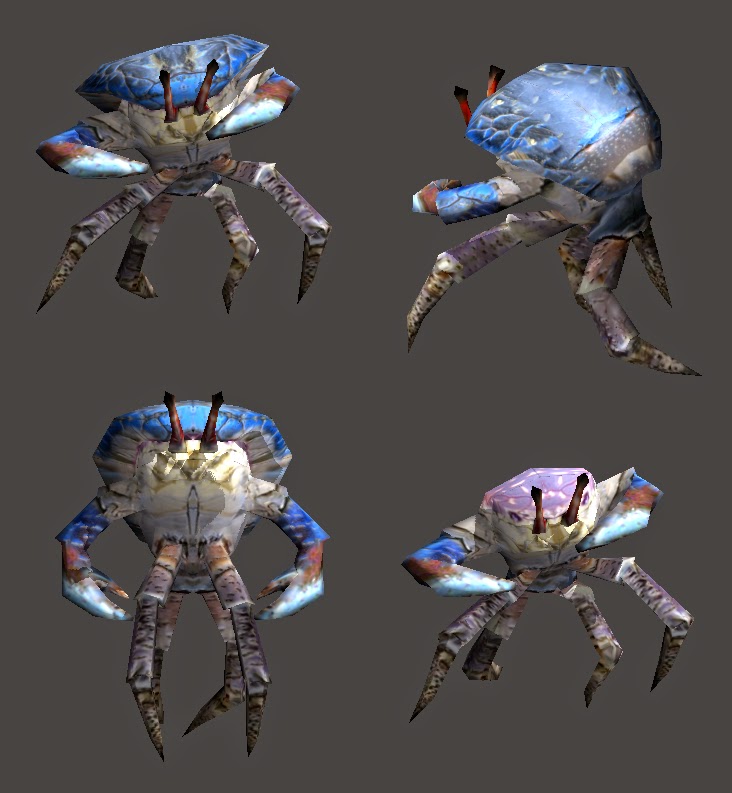From now on I hope to set a routine of releasing short video updates on progress. I've pushed through the pathfinding and most of the movement AI programming. I'm pretty comfortable with how the agents are working out. I made some changes to the A star algorithm to make it faster and generate better routes.
It's now possible to add props to the game, they block movement and can be moused over for some feedback about what they are, but they can't contain anything yet. I think I should probably work on the inventory and item system next. Once a player can pick things up and equip them we can get started on prototyping combat. Stats will stay rigid at first, levels and skills will come later.
I also did some work on my 3d design work flow. I had been baking textures on to my characters and then touching them up in the GIMP, but I learned a bit about projection painting and after trying it I found it's a good fit for my current style.
Here's a monster I made with the new workflow:
It's now possible to add props to the game, they block movement and can be moused over for some feedback about what they are, but they can't contain anything yet. I think I should probably work on the inventory and item system next. Once a player can pick things up and equip them we can get started on prototyping combat. Stats will stay rigid at first, levels and skills will come later.
Click the image for a link to the video blog.
I also did some work on my 3d design work flow. I had been baking textures on to my characters and then touching them up in the GIMP, but I learned a bit about projection painting and after trying it I found it's a good fit for my current style.
Here's a monster I made with the new workflow:


Comments
Post a Comment